The problem with renewable energy, so claim its critics, is that it is too diffuse. Solar and wind farms require vast amounts of land to harvest the low-density energy from the sun and wind. In contrast, they point out that power plants, like coal, natural gas, and nuclear, have relatively tiny footprints, requiring hundreds of times less land than renewables for the same power.
This argument has merit but it overlooks two essential points. First, it conveniently ignores the very large land footprint of the mines that produce the fuels for coal and nuclear plants. Second, each acre can only be mined once. After that, the acre is depleted forever and the mining companies must move on to the next acre. In contrast, an acre of solar, wind, hydro, or biomass will continue producing energy, year after year, forever. In other words, an acre is not just an acre.
This relationship reminds me of a goose that lays golden eggs, where the goose is an acre of land and the eggs are revenue. If I want money immediately, I can sell the goose but I’ll never see any more value from it ever again. But, if I hold onto the goose, and sell its golden eggs over a longer period of time, the value of those eggs will eventually be worth much more than I could have ever made selling the goose. An acre devoted to solar and wind will generate energy in perpetuity.
The use of land shouldn’t be measured in acres alone but instead, acres over time
The table below normalizes all major electricity generation sources to a common unit, a gigawatt hour. One GWh of electricity can power about 100 American homes for a year and it is roughly the electricity consumed by a person over their lifetime.
Land required for generating electricity
| Land use | Electricity generated over 75 years (GWh) | Acres per GWh per year | Reclamation options |
|---|---|---|---|
| Solar | 25.00 | 8.33 (perpetual) | Remove panels and dual-use |
| Nuclear (mining) | 16.66 | 16.66 (only once) | Very high cost (radioactive) |
| Coal (mining) | 11.11 | 11.11 (only once) | Costly (<1% reclaimed) |
| Wind | 2.90 | 26 (perpetual) | Remove turbines and dual-use |
| Hydro | 2.50 | 30 (perpetual) | Drain dam + restoration |
| Biomass | 0.40 | 188 (perpetual) | Replant trees |
(click here to see as an image; sources available here)
Let’s start by looking at land-use as a renewable critic might — a snapshot of the electricity generated per unit of land. This narrow analysis shows that a solar or wind farm uses hundreds of times more land than the relatively tiny footprint of a coal or nuclear plant. But, analysis like this often overlooks the much larger footprint of mining coal and uranium. The column “Acres per GWh per year” contains land use, including mining, to better compare land efficiency. When measured as a snapshot in time, land used for mining coal (0.09 acres per GWh) and uranium (0.06 acres per GWh) uses less land than solar (3 acres per GWh) and wind (26 acres per GWh). So, when you include mining, does this confirm that fuel-based land use is still the most productive?
Not at all, because it ignores the value over time. Imagine this was your land and that you planned to own for many years. Suddenly the economics look very different. If you build a solar farm on your land and operate it for 25 years, you can produce 8.33 GWh of electricity, making that land’s energy output more competitive with an acre of coal (11.11 GWh) and nuclear (16.66 GWh). However, if you measure that same land over your lifetime, an acre of solar can generate 25 GWh of electricity, more than an acre of nuclear or coal!
Even with solar shining over time, there are many considerations beyond energy output when assessing the footprint of electricity generation. There is a fixed amount of land on earth and we need to consider the health of each acre we use — the environmental impact of mining land versus hosting solar panels is very different.
Beyond acres and kilowatt hours: dual-use and reclamation
Renewables can hold their own against mining fuel on an energy per acre basis but it is the health of that acre where renewables demonstrate the best land footprint. The towers that hold those enormous turbines only require a tiny portion of a wind farm’s total land footprint—the rest can serve other purposes. Increasingly, land in wind farms has become “dual-use,” simultaneously supporting livestock grazing and agriculture. Solar farms, because they are typically more densely packed than wind farms, make dual-use more of a challenge, but pilot projects all over the world are proving that panels can co-exist with grazing and certain kinds of agriculture (see Will the growth of solar power crowd out farmland?). Even hydropower reservoirs and biomass forests allow for recreation while they are producing energy.
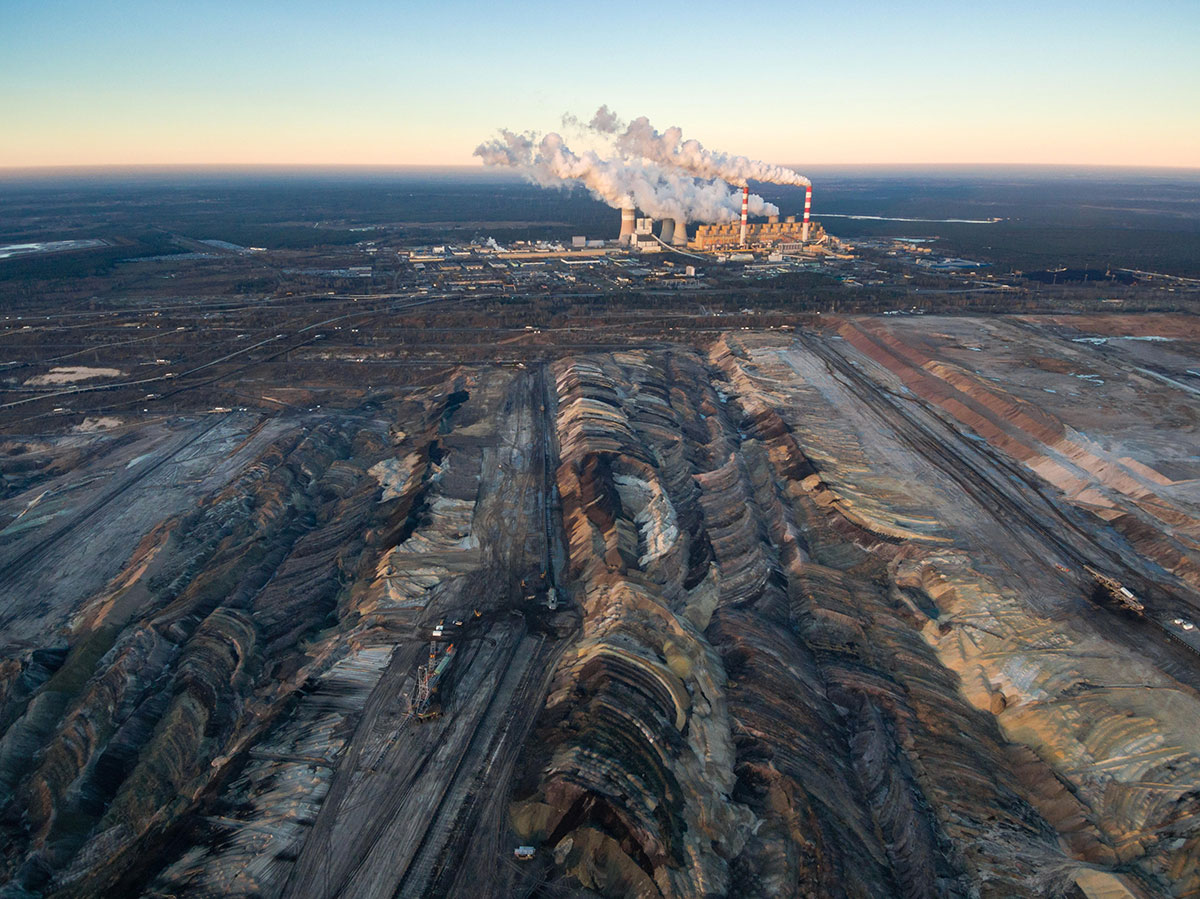
Mining is far less flexible or forgiving. While mines are open, they are too dangerous for any purpose other than fuel extraction. However, advocates of fossil fuels and nuclear make the case that when mines eventually close, the land can be reclaimed and given back to nature. This is difficult to assess with uranium mines because 95% of this nuclear fuel comes from outside the US where there is less accountability for environmental initiatives. What we do know is that uranium mining brings radiation-laden rocks permanently to the surface, requiring extraordinary cost and care for putting the land back to its original state. Nuclear plant disasters like Chernobyl and Fukushima have also left hundreds of thousands of acres unfit for human habitation.
Reclaiming coal mines is a bit easier to analyze because coal is mined domestically. A report by the Appalachian Law Center found the US had spent $5.7 billion over 40 years to reclaim 800,000 acres of land damaged by mining but they also found 6.2 million acres were still awaiting reclamation (this federal fund is set to expire in 2021). Storing the 2 billion tons of coal ash left over from a century of coal power requires 1,100 ash ponds across the US. While the land required for ash is relatively small in terms of acres per GWh, the coal ash contains arsenic, mercury, uranium, and other toxic heavy metals. Reclaiming those acres will cost billions of dollars.
When you put all this together, the environmental impact of mining coal and uranium diminishes many of its benefits in land usage efficiency.
Why solar is the most land-efficient type of renewable energy
Now, let’s look at how much electricity each type of renewable power plant can produce per acre. At first glance, solar’s 3 acres per GWh is roughly 10-times more efficient than wind and almost 100-times more than hydro or biomass. How is that solar requires so much less land?
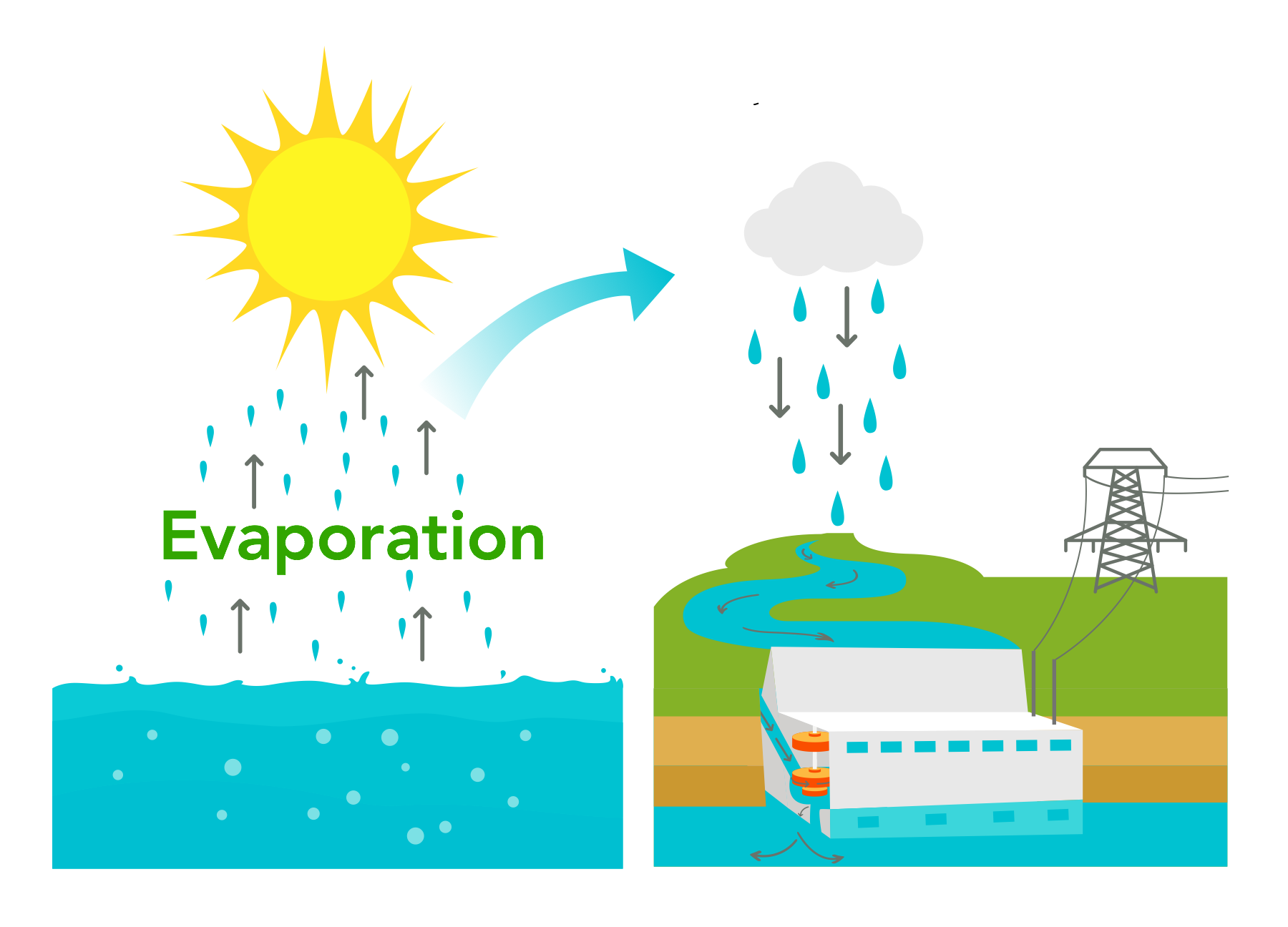
It helps to remember that nearly every form of energy began, at some point, as solar power. Wind is just moving air, set in motion by heat from the sun. The water for hydroelectric plants started out at lower elevations before the sun evaporated it and delivered it as rain. And, of course, the trees used in biomass plants get all their energy from sunlight. Solar panels shortcut all these complex flows and convert sunlight directly into electricity, faster and more efficiently than any other renewable energy system. It’s not surprising that solar panels require far less land than any other form of renewables.
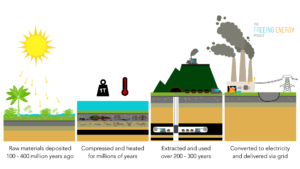 Even coal and natural gas began life as sunlight-powered biomass, albeit a very long time ago (see the article, Where does coal come from?). Back then, the energy in this biomass was just as diffuse as it is today but tens of millions of years of geologic heat and pressure concentrated it into a much higher energy density.
Even coal and natural gas began life as sunlight-powered biomass, albeit a very long time ago (see the article, Where does coal come from?). Back then, the energy in this biomass was just as diffuse as it is today but tens of millions of years of geologic heat and pressure concentrated it into a much higher energy density.
Solar makes the best of use of land because it often doesn’t need any land at all
It turns out there are lots of acres that few people will ever want to visit. These can be an ideal place for solar. The largest footprint of such land is deserts. While care must be taken for local flora and fauna, the land available is vast, even in the US. For example, the Mojave Desert, located in the US Southwest, occupies almost 50,000 square miles – more than twice the land needed to power the entire US with solar panels (see How much solar would it take to power the US?)(obviously, we don’t want to and don’t need to cover a single desert with solar panels but there is clearly a lot of uninhabited land in the US).
Sadly, there is also a lot of land that was once habitable but is now destroyed or even toxic — solar panels can give this land new value. The industry refers to these places as “brown fields” and they include closed landfills, old coal mines, and Superfund sites. Even the area around the Chernobyl nuclear reactor is now hosting a 4 acre of solar plant.
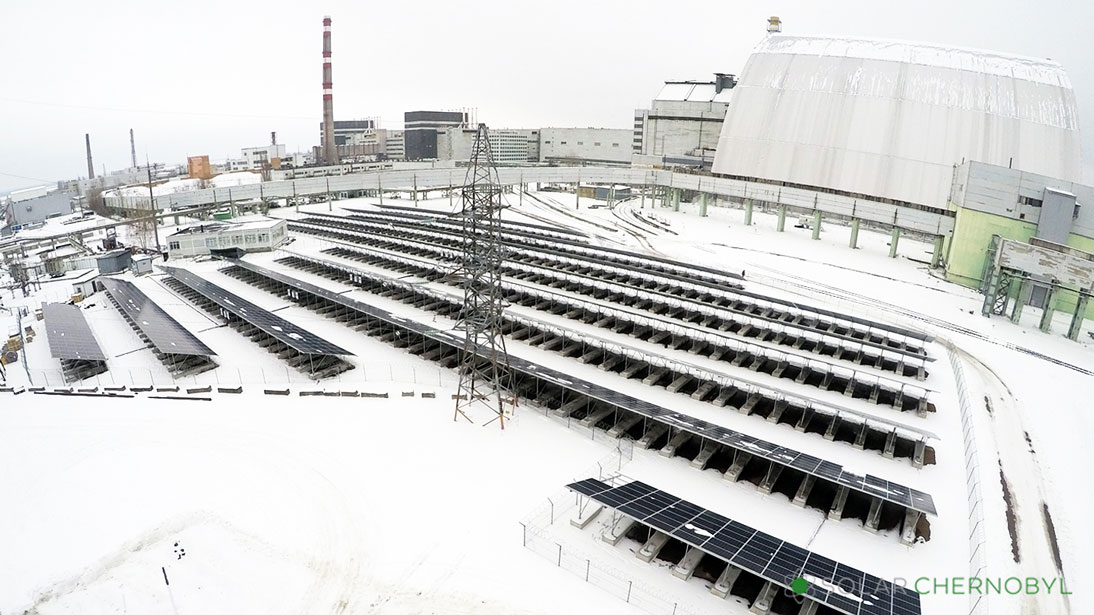
Another kind of land that is otherwise usable is the surface of water treatment ponds, dams, reservoirs, and even the lakes behind hydroelectric dams. The industry has adopted the term “floatovoltaics” (seriously) to describe this fast-growing venue for solar panels. There are benefits beyond leveraging unneeded space — the proximity to water helps cool the panels, making them more efficient and the panels reduce evaporation and limit algae blooms.
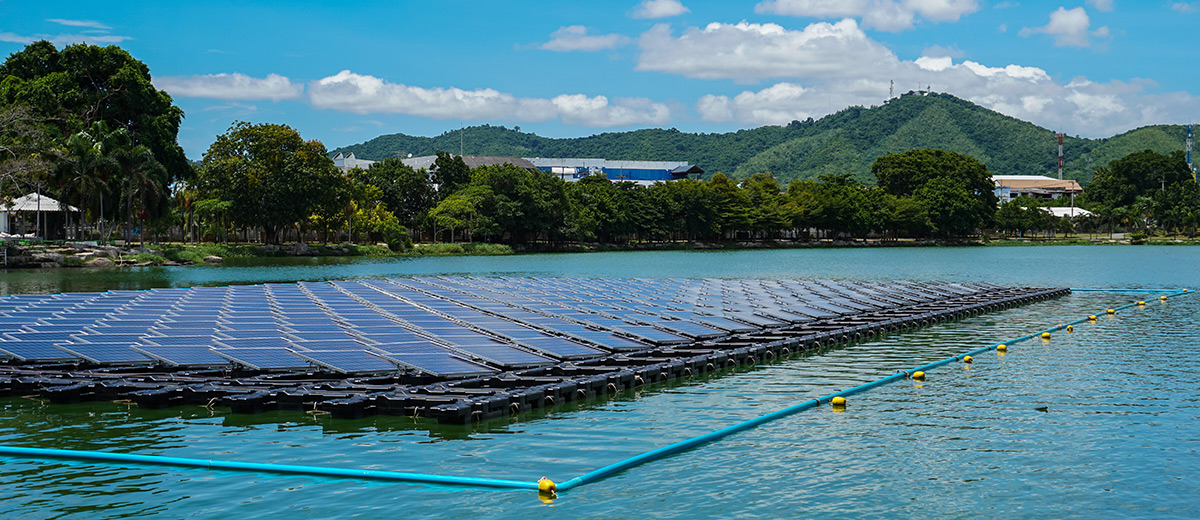
The most exciting story for solar and land footprints is building integrated photovoltaics or BIPV. This is where common building components are upgraded to include solar cells. Everyday things like shingles, windows, driveways, awnings, and walkways become electricity generating solar installations. Since these components already need to be purchased and installed, the added cost of making them solar-powered will be relatively smaller than stand-alone solar panels. BIPV is not only reducing the overall land required for solar power, it is one of the most promising areas to continue driving down the costs of solar.
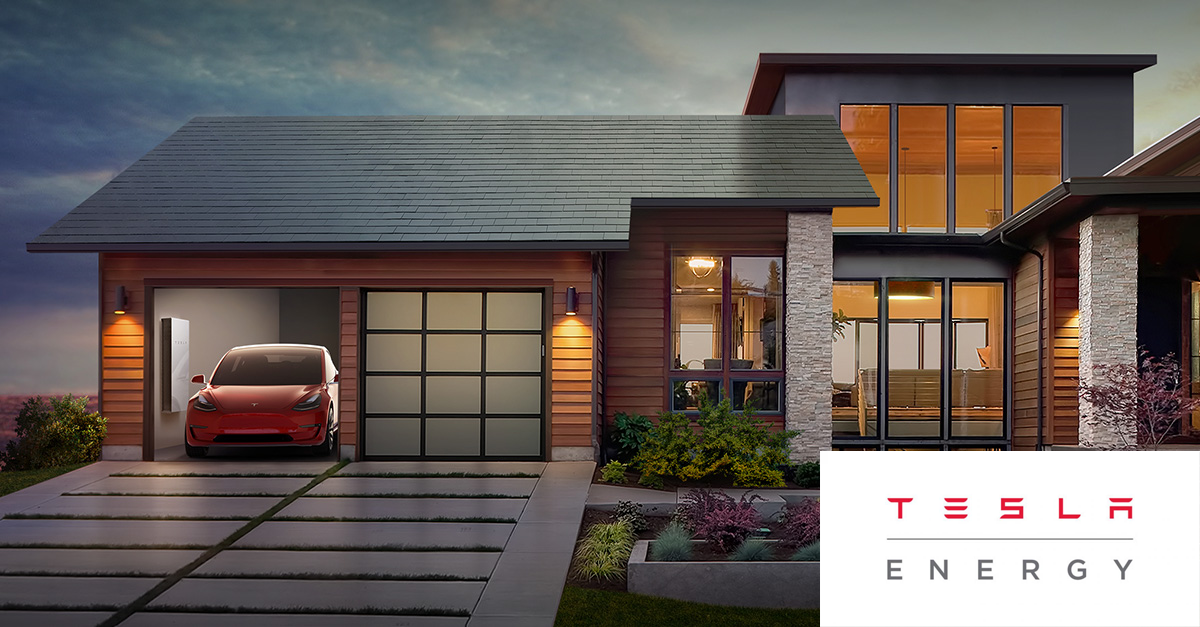
There is more characteristic of solar that makes its land use truly unique. Sunlight is everywhere. Every acre of land and water on earth receives sunlight at some point. Mines and wells can only be put on top of rarified underground deposits. Wind and hydro require unique geographies. Even biomass only makes sense in places with rich soil and rain. Among all the mechanisms for generating electricity, only solar can be put anywhere on earth. It is the most equitable and universally available source of energy that exists.
Geothermal and natural gas use the least amount of surface land
What about geothermal and natural gas, you may ask? When measured by surface land usage, geothermal is the clear winner. There is no fuel extracted from the earth, just heat. Geothermal power plants sit atop the land being drilled and process the heat directly. Were it not for occasional earthquakes and the very limited number of places that can be cost-effectively tapped for heat energy, geothermal might be the ideal source of electricity generation. Until there are substantial advances in technology, geothermal will be relegated to a niche solution.
Much as it may pain those adamantly opposed to fossil fuels, natural gas also enjoys one of the smaller land footprints among electricity generators. Like geothermal, all the action is underground. Both can use as little as a few acres on the surface but can easily drill downwards and outwards for miles. But unlike geothermal, natural gas is a fuel that must be extracted and burned to generate electricity. This means it has a wide range of non-land environmental impacts including methane leaks at wellheads and along pipelines, chemical leaks into water tables, and emissions like SOx and CO2 (these impacts will be covered in another article).
The Freeing Energy Perspective
While renewable energy initially requires more land than fuel-based power plants, this is a short-lived advantage. Over time, an acre of solar panels will produce more energy than any mining operation, whether it is coal or nuclear. During operation, a solar or wind farm will have so little impact on its land that it is increasingly common to allow grazing and farming on the same acres at the same time. Because solar panels and wind turbines sit on the surface of land, and because most of the materials can be recycled profitably, we can hope that land reclamation will be far more successful than gas wells, coal, or uranium mines. Best of all, the land footprint of solar will continue to shrink. As technology makes panels and panel placement more efficient and as more solar is built into rooftops, parking lot canopies and buildings, the total acreage of land needed per gigawatt hour will continue declining.
Overall, the footprint of solar energy is uniquely small for several reasons:
- Solar can be put anywhere on earth because the sun shines everywhere. No other type of electricity generation can match this flexibility.
- Over time, an acre of solar can generate more electricity than any other renewable, and more than coal and uranium mines.
- Solar can be placed onto existing structures like roofs, driveways, roads, etc, thus not requiring any dedicated land.
- Solar can revive the value of land lost to misuse like old coal mines and Superfund sites.
- Solar can be built in places that are not otherwise habitable, like deserts and lakes.
- Solar farms are already proving they can “dual-use” and co-exist with agriculture and grazing.
Every source of energy has its own set of challenges and benefits. My hope is that this article helps reduce the concerns that the land footprint of renewables like solar should be used to justify putting the brakes on continuing global adoption.
Disclaimer: the metrics in this article are gathered from many sources and normalized for the sake of illustration. This analysis does not include the land used for waste disposal or for the materials used to construct the plants themselves (solar, wind, nuclear, coal, and natural gas power plants all use a lot of steel, copper, and cement). Both of these topics will be covered in upcoming articles.

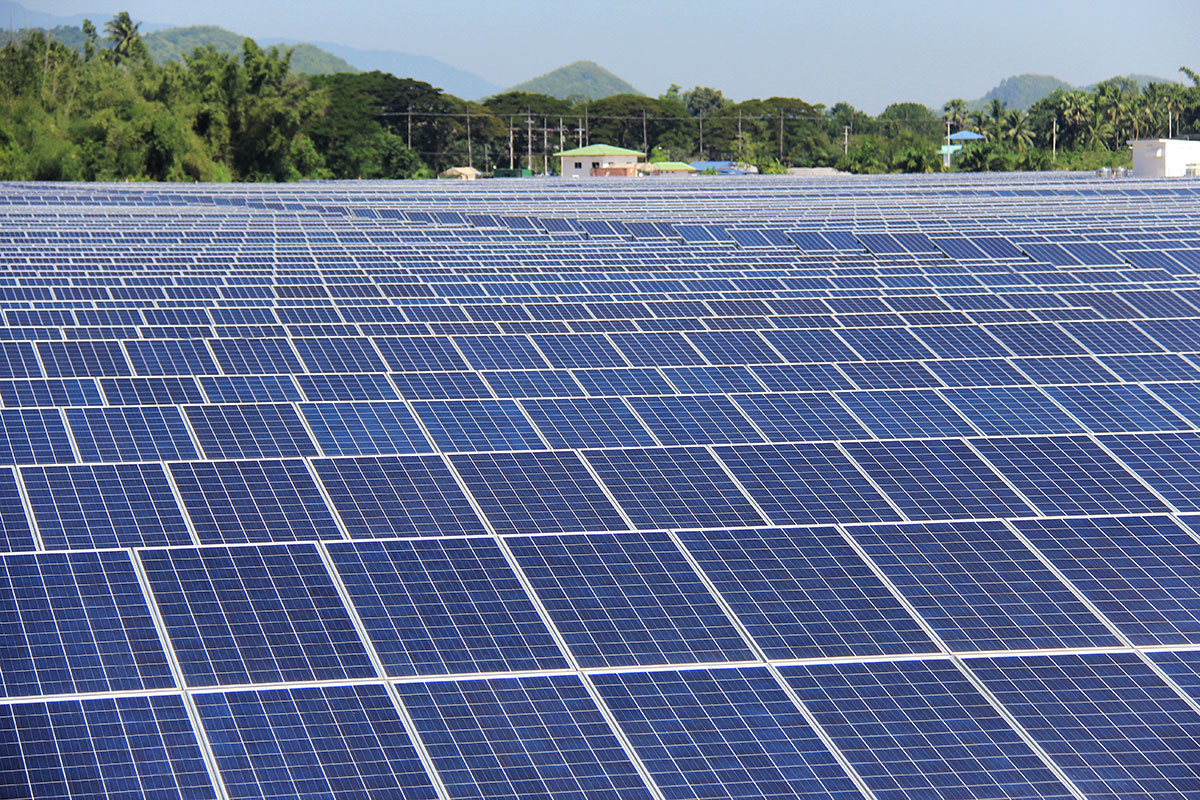

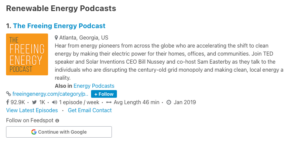
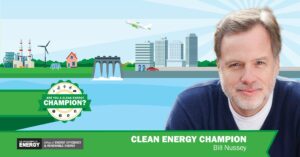
14 Responses
Really appreciate this discussion. A nice counterpoint to Energy Sprawl discussions from the likes of Shellenberger / Bryce (on that, see: https://getenergysmartnow.com/2010/08/16/energy-bookshelf-a-power-hungry-gushing-of-lies/) / etc seeking to make (false) case for fossil fuels.
This is a fluff piece by a pro renewable energy organization. They pretend to provide all of the information needed for people to make a responsible decision and not once did they mention a six mile wide toxic and radioactive lake created in part from the mining of rare earth minerals that are needed to create the large magnets used in wind turbines. You heard it. Baotou Toxic Lake is 6 miles wide and is toxic and Radioactive yet no mention was made in this article of that massive land use. It’s very typical of pro renewable energy pundits to provide half-truths and partial truths in their attempt to push unreliable and intermittent renewable energy in local rural communities.
Warren Buffett said it best. The only reason to build wind developments is because of the large government subsidies and that without those subsidies there really is no reason to invest in wind and solar plants
Can you share a source on this toxic lake? It should definitely be a part of this discussion.
FWIW, most modern wind turbines do not use fixed, rare earth magnets anymore. Regardless every kind of energy generation has some kind of environmental impact. Citing one particular impact of one kind of energy generation is not enough to determine how that system (in you case, wind) impacts the environment compared to others. We have other articles on the site that compare apples-to-apples on a wider range of topics:
Poisonous waste products – http://www.freeingenergy.com/facts/toxic-toxicity-dangerous-solar-nuclear-g111/ (rare earth magnets are not listed here but we will update this to include their impact if you can give us a source)
Water usage – http://www.freeingenergy.com/facts/energy-fact-solar-and-wind-use-250-times-less-water-than-coal-and-nuclear-plants/
Use of steel and concrete – http://www.freeingenergy.com/facts/compare-power-plant-construction-steel-concrete-weight-environment-g106/
Greenhouse gas emissions – http://www.freeingenergy.com/facts/energy-fact-comparing-co2-so2-nox-and-methane-across-coal-natural-gas-and-biomass/
Thank you!
Good ideas here, Bill, but your data on land use of nuclear is off by one to two orders of magnitude. You list one Uranium mine, (generously reported) 25 km2 big, responsible for 4.1% of global production in the year you are looking at it. First, this single mine is low-grade uranium ore and other mines are higher grade or don’t “mine” at all and instead use in-situ leaching (now responsible for 57% of global supply with no rocks being moved). Your extrapolation from this one mine is therefore very misleading. Second, and worse, your math wrongly assumes that these 25km2 are “used up” for exactly one year of production. However, this particular mine opened in 1976 and, for example, in 2005 provided 8% of global supply or uranium. You can find this on wikipedia… With natural uranium containing 0.7% U235, it represents about 21,000 times the energy (in current reactors) as can be released from coal. This very fact makes me think that there are more errors in your calculation in addition to the ones I’ve found.
Take note that no land use comparison was done of oil and natural gas. Natural gas has extremely low associated land use.
Yes, great point about natural gas using very little land. Geothermal also uses very little land by energy generated.
Solar panel materials also require mining, & let’s not forget the massive amounts of battery backup capacity required, which will require further mining. Solar panels & batteries won’t last forever, which will prompt more mining & recyclability challenges. Additionally, if transportation, residential & commercial heating, industrial processes, etc., are converted to electricity, overall power plant capacity will need to multiply accordingly by a factor of 3, 4, 5, or more? Thinking about this with regard to land area required for the solar/wind power plants, their recyclability challenges, & mining required & it gets crazy scary! Also consider the multipliers to copper, lithium, & other special material requirements for going all electric. Is it even possible on a massive, worldwide scale? Will the Earth have enough?
Climate crisis solution is simple, easy and fast. Without big investment, but with big return! Integrated circuits are the big revolution of all technology sectors! Integrated circuit – Wikipedia An integrated wind farm will be another gigantic revolution of energy! I simply combine and improve existing knowledge and equipment, success invented an integrated wind farm system and published on uspto.gov, with app# 20210017956, title: “wind tower complex”. It is an 8000 sq. meter 40 storey building. The first 10 floors act as towers for all wind turbines, saving big money and areas to build individual towers. And create 10 times the useful area it occupied! The other 30 floors will install 30000 of my special design wind turbines, each floor 1000 wind turbines, our wind turbine only have 3 parts, one 1 X 3 meter spiral rotor, and two 20 KW alternator at both sides, with easy plug and socket coupling, for easy and faster installation! 30000 wind turbines will have 1.2 GW capacity, actual production 1.02 Gwh. total cost 150 million dollars, within 2 years construction and installation, will generate 9835.2 GWH energy annually for over 50 years. Assume 2cents/Kwh, will make 178.7 million dollars each year. Much better than the high risk GW nuclear power plant, Nuclear power plant – Wikipedia costing 6-9 billion dollars. More are able to reduce and replace the use of fossil energy in order to alter climate change within a short time! Excellent investment! Because I can’t do it all by myself, sincerely looking for countries, organizations and all people, who are willing to combat climate change, give me a little bit of political, financial and
The artilce points out the impact of mining for Fossile Fuels and Nuclear Materials. Why is it that the mining of rare earth elements need for Solar and Battery technologies is ignored? Not just the land impact but the fact that most developed mines and known deposits of rare earth elements are located in countries that have a number of problems. Those problems include human rights violations, exponential productions of global warming emissions (compared to the the United States), and little to no concern over sustainable operations.
For Solar Panels despite the raw materials I miss the energy required to produce the panels is quite high and the radioactive waste that is generated during the production shall not be forgotten.
This is far from an objective discussion of energy sources based on some questionable data sources.
Thankfully, since publishing OurWorldInData have produced a comprehensive analysis of this topic: https://ourworldindata.org/land-use-per-energy-source
We welcome any feedback and our goal is always to get to the best possible data so we can have a rational discussion about how to power our world.
First, OurWorldInData is an excellent source and one we use on this site and in the book.
Second, what sources in our calculations were questionable? We would be happy to replace/update our math.
Third, if your concern over this data relates to nuclear, then I encourage you to look at our math and sources. We include the land required to mine uranium (based on actual reports by a well-respected nuclear mining company). OurWorldInData does not appear to include that aspect of land use.
If you saw other areas where we can improve this data set, we welcome constructive feedback on our math and sources.
Where would Concentrating Solar Towers belong in this discussion? It would seem to take up a lot less land area and produces a LOT of power, of which some can be stored for nighttime power usage. I know, I know, the birds. But, we should be able to produces a system that would warn them from getting fried by intensce heat around the towers.